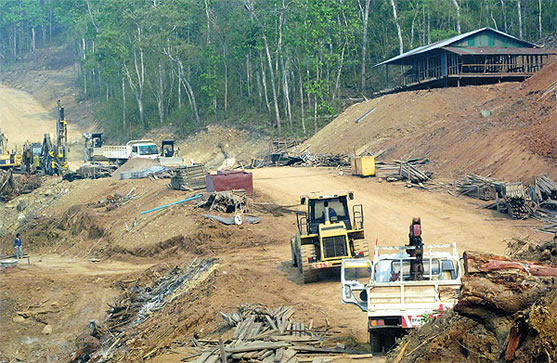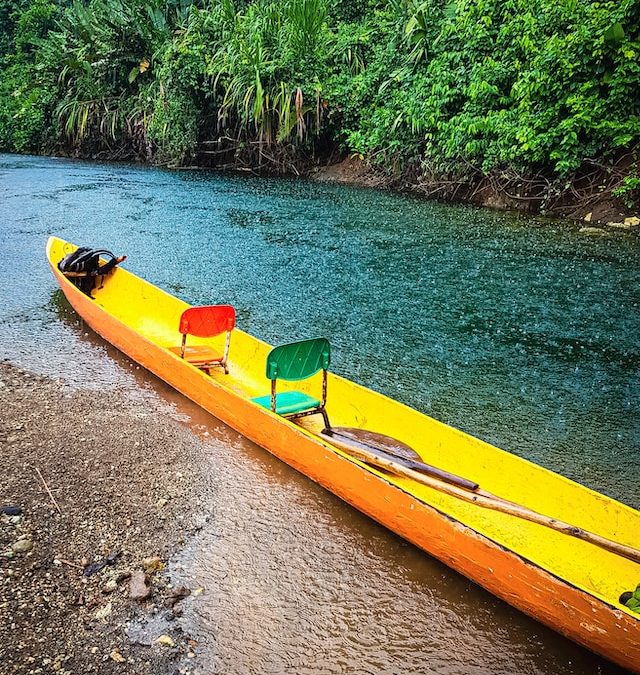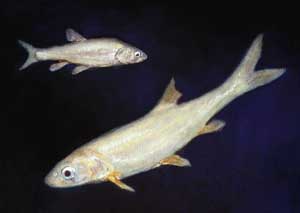
by Deep Green Resistance News Service | Aug 20, 2012 | Biodiversity & Habitat Destruction
By Lawrence Del Gigante / Inter-Press Service
“While each project proposed in Cambodia comes with a different set of impacts, large dams are likely to widen the gap between the rich and the poor, increase malnourishment levels and lead to an environmentally unsustainable future,” Ame Trandem, South East Asia programme director for International Rivers, told IPS.
Four dam projects have been approved so far in Cambodia, with one already operational. All are being developed by Chinese companies on build-operate-transfer agreements, according to Trandem.
The Mekong River runs through six countries, including China and Vietnam, most of which are planning the construction of hydroelectric dams.
“The plans to build a cascade of 11 Mekong mainstream dams is one of the greatest threats currently facing Cambodia,” said Trandem.
The mandate on planning and development of hydropower in Cambodia lies within the ministry of industry, mines and energy, which did not respond to requests for comment.
Another danger of damming the Mekong is the threat to the Mekong delta, an extremely fertile area of land which is responsible for much of the region’s rice supply.
“As the Mekong River feeds and employs millions of people in the region for free, it would be irresponsible to proceed with the Xayaburi and other mainstream dams,” said Trandem.
The Mekong is one of the only rivers in the world to reverse its flow in the dry season. This natural mechanism buffers the intrusion of salt water from the South China Sea into the delta, and could be upset by upstream development.
Dams also block fish migration routes, alter flows, and change aquatic habitats, so these projects are also likely to have an adverse effect on Cambodia’s fisheries.
“The Mekong River Commission’s Strategic Environmental Assessment warned that more than one million fisheries-dependent people in Cambodia would lose their livelihoods and even more would suffer from food insecurity,” said Trandem.
“The loss of even a small percentage of the Mekong’s fisheries can represent in a loss of tens of millions of dollars.”
Partnerships have been established between the countries through which the Mekong runs in order to prevent overharvesting of the river’s resources. However, China is not a signatory to the 1995 Mekong Agreement, and can effectively build these projects independently from downstream countries. The dams in Cambodia are being financed by Chinese investors.
“The impacts of these projects are already being felt downstream,” said Trandem.
Hydroelectricity, even if a successful venture, will not solve the country’s electrification problems, other analysts say.
“Right now it is relatively catastrophic, the power situation in the country,” Alexander Ochs, the director of climate and energy at the Washington-based Worldwatch Institute, told IPS.
Cambodia has one of the lowest electrification rates in Southeast Asia, estimated at only 24 percent, according to the Asian Development Bank (ADB).
The government aims to raise the national electrification rate to 70 percent by 2020, according to the ADB, by expanding the grid and sourcing more than half of the needed electricity from the Mekong River.
A large complication is transmitting the electricity, with only the major cities and surrounding areas having access to power lines, meaning people in rural areas will not benefit from the hydro.
“The number of people that are really connected to a grid as we know it, a modern power service or energy line, in rural areas is as little as seven percent of the population. Overall, nationwide, it’s about 15 percent,” said Ochs.
Read more from Inter-Press Service: http://www.ipsnews.net/2012/08/cambodias-hydro-plans-carry-steep-costs/

by Deep Green Resistance News Service | Aug 17, 2012 | Indigenous Autonomy, Mining & Drilling, NEWS
By Mongabay
Colombia’s move last week to begin granting new mining concessions across 17.6 million hectares has raised concerns about the potential environmental impacts of a new mining boom across the country.
Colombia’s rich mineral deposits have long been eyed by investors, but civil conflict limited extraction to secure areas until the early to mid 2000s. With the decline in violence in recent years, mining projects in the country have mushroomed, including a surge in unlicensed and unregulated wildcat mines — the National Mining Agency said yesterday that a census for 2010-2011 found that 73 percent of mining operations lack proper title.
But with the influx of miners, there have been rising complaints about environmental damage. Earlier this month environmentalists held demonstrations demanding stronger safeguards in a new mining code that will be submitted to Congress next year. Meanwhile indigenous groups have been reporting conflict with both large mining companies and small-scale miners for years.
The Colombian government asserts that despite opening vast areas for mining, including regions renowned for their high levels of biodiversity, the new mining regulation will limit some of the worst damage seen in recent years by formalizing small-scale miners. It says the new mining code will prohibit mining in protected areas and sensitive ecosystems.
Environmentalists aren’t so sure. According to Catherine Gamba-Trimiño, an independent environmental consultant, mining titles and environmental licenses already granted in protected areas would be allowed to stand, while lower-level protected areas, like civil society nature reserves and municipal parks wouldn’t be off-limits.”Governmental efforts to plan and organize development and extractive activities are applauded,” Gamba-Trimiño told mongabay.com. “However, asking Colombian society to pay the price for the environmental licenses already granted in strategic ecosystems such as paramos, instead of perhaps indemnifying companies and revoking former licenses, is not fair.”
Gamba-Trimiño added that indigenous communities — which control large swathes of Colombia, including areas being targeted for mining — may also lose out under the new rules.
“Companies are obliged to consult only with Indigenous and Afro-Colombians before starting operations in their lands, but the Mining and Energy Minister has been clear at saying ‘they have no veto power.'”

by Deep Green Resistance News Service | Aug 15, 2012 | Climate Change, Obstruction & Occupation
By Will Wooten / Waging Nonviolence
One year after more than 1,200 people were arrested in front of the White House during two weeks of sit-ins against the Keystone XL tar sands oil pipeline, a coalition of Texas landowners and activists will attempt to physically halt its construction. Led by veteran climate justice organizers, participants ranging from environmentalists to Tea Partiers are preparing to lock arms for a sustained nonviolent civil disobedience campaign, beginning perhaps as early as this week.
The impetus for such action, which is being called the Tar Sands Blockade, goes back much further than last summer, however. In 2008 and 2009, small landowners along the pipeline’s route in rural Texas, Oklahoma and Nebraska started noticing survey stakes with orange tape marked “KXL.” They soon found out that TransCanada — the company building the pipeline — had eminent domain power over their property and that if they didn’t sign a contract allowing TransCanada to build, they would be taken to court.
Many landowners, feeling pushed into an impossible situation, signed the contracts. Some began organizing, doing community outreach to explain what was happening and building conservative support on the ground. Organizations such as Nacogdoches Stop Tarsands Oil Pipelines evolved out of conversations between landowners — first focusing around eminent domain, but then, when they learned that tar sands oil would be pumped through the pipeline, discussion started to include environmental impacts, such as toxic diluted bitumen and climate change.
By August 2011, the climate movement in the United States started to focus in on the Keystone XL with Tar Sands Action, a civil disobedience campaign led by Bill McKibben and members of 350.org. The 1,253 arrests in front of the White House helped raise the issue to a national level by stressing that President Obama could stop the pipeline by rejecting its permit to cross the U.S.–Canada border.
Weeks later, the Occupy movement emerged. While environmental issues were not at the forefront, many Occupy encampments passed resolutions opposing Keystone XL and took part in Tar Sands Action’s next rally in Washington, D.C., when, on November 6, 12,000 people encircled the White House. Days later President Obama denied the permit and, for the moment, Keystone XL was thought dead.
TransCanada then changed tactics and decided to split the pipeline into segments so that it could get a head start on construction while making inside deals in Washington to secure the necessary permit for crossing the border. In a sign of goodwill to the fossil fuel industry, President Obama went to Cushing, Oklahoma, and declared that he would “expedite” the permitting process for the Gulf Coast segment from Cushing to Houston and Port Arthur, Texas. While that ability was technically outside of his reach, it was a hint to the agencies responsible for such decisions. Perhaps not surprisingly, the Army Corps of Engineers then granted the three permits TransCanada needed to start construction — despite the absence of an environmental review.
The southern segment of the Keystone XL will be built in three different sections, simultaneously, with the goal of transporting tar sands oil currently stored in Cushing, Oklahoma, to refineries on the Gulf Coast, where it then can be shipped around the world. When Texas activists such as myself learned that this was happening despite the Tar Sands Action victory, we decided to form Tar Sands Blockade.
While landowners began organizing along the pipeline route in early 2012, climate justice activists with Rising Tide North Texas were looking for ways to bring wider attention to the pipeline’s impending construction. Many of us had been active Occupiers during the encampments and were disappointed with the movement’s inability to make the connection between economic justice and the climate. So we made a stronger effort to engage people on the community level.
As a result, Tar Sands Blockade is being informed by a variety of voices — from self-identified Tea Party members, flying Gadsden flags at the front of their long driveways, to Occupiers who slept at encampments across the country.
Several organizers with Tar Sands Blockade also participated in and organized for Tar Sands Action, including veteran climate justice activists from around the country. This diverse coalition has agreed on one simple call to action: The Keystone XL should not be built in Texas, and nonviolent direct action is required to stop it.
Other means of addressing the grievances of landowners and meeting the challenge of climate change have thus far failed. As Bill McKibben’s recent article “Global Warming’s Terrible New Math” made clear, the world has years, not decades, to confront the fossil fuel industry head on. Nonviolent direct action offers the best chance of victory, not just for the Tar Sands Blockade but for other fossil fuel extraction movements, such as those opposing fracking, mountaintop removal and coal exports — all of which have been active in what’s being called a Climate Summer of Solidarity.
That solidarity will take on greater meaning in a matter of days when construction on the pipeline is expected to begin and landowners will be bringing ice to the encampments to help alleviate the extreme Texas heat, as well as thanking everyone for defending the home they’ve built over decades. Activists will respond by holding the blockade for as long as possible, through the summer and likely into the fall. This could be an important moment for the entire climate movement, setting the stage for future actions and alliances — not to mention giving new meaning to the words “Don’t mess with Texas.”
From Waging Nonviolence: http://wagingnonviolence.org/2012/08/dont-mess-with-texas-tar-sands-blockade/

by Deep Green Resistance News Service | Aug 11, 2012 | Biodiversity & Habitat Destruction, NEWS
By US Geological Survey
From 1900-2010, freshwater fish species in North America went extinct at a rate 877 times faster than the rate found in the fossil record, while estimates indicate the rate may double between now and 2050. This new information comes from a U.S. Geological Survey study to be published in the September issue of the journal BioScience.
In the fossil record, one freshwater fish species goes extinct every 3 million years, but North America lost 39 species and 18 subspecies between 1898 and 2006. Based on current trends in threatened and endangered fish species, researchers estimate that an additional 53-86 species of freshwater fish may be extinct by the year 2050. Since the first assessment of extinct North American freshwater fishes in 1989, the number of extinct fishes increased by 25 percent.
“This study illustrates the value of placing current events into the context of deep geologic time, as rocks preserve an unbiased record of natural rates of processes before human activities began to alter the landscape, the atmosphere, the rivers, and oceans,” said USGS Director Marcia McNutt. “Freshwater fish are a good choice for analysis as their bones make clear fossil impressions, and their lake and river environments produce excellent stratigraphic sequences.”
The study’s author, Noel Burkhead, used an established method to compare the rate of extinction found in the fossil record with modern rates.
“Estimates of freshwater fish extinctions during the twentieth century are conservative, because it can take 20-50 years to confirm extinction,” said Burkhead, a research fish biologist for the USGS.
Extinction is a natural process, Burkhead explained, so examining its rate over a long geological timescale provides biologists with a benchmark for comparing current extinctions to background rate. The accelerated pace of extinction observed since the beginning of the twentieth century suggests human causes.
In North America, assessments of extinctions are conducted by the American Fisheries Society’s Endangered Species Committee, using categories to factor in a lag time since the last observation of the species. The study used the categories “extinct” (species not seen for 50 years or more), “possibly extinct” (not been seen for 20 years or more), and “extinct in nature.” All these categories require that searches for the missing fishes must have been made by knowledgeable biologists.
“It is extremely rare that the death of the last individual is documented by biologists,” said Burkhead, “although it can happen when a fish only is found in a specific spring or caldera, and it dries up. That’s what happened with five species of desert pupfishes and the Alberca silverside—the last known fish to go extinct in North America.”
The Alberca silverside was found only in the Alberca Caldera, Guanajuato, Mexico; it went extinct when the caldera temporarily dried up in August 2006.
Surprisingly, Burkhead reported that 90-96 percent of fish extinctions in the fossil record were not linked to the five well-known mass extinctions. Natural causes of fish extinction are linked to transitions in landforms and continental watercourses over time, but many twentieth century extinctions were caused by dams, channelization of rivers, water pollution, and other human-induced factors.
The background rate of extinction is based on the fossil record, which includes information on when ancient fishes lived and how long species survived in the geological past. Burkhead used data on fish extinctions from well-known paleontologist Steven M. Stanley at the University of Hawaii.
“Another cause of extinction can be a change in a fish’s food chain, which is what may have happened to the harelip sucker, a really cool fish that used to live in seven states throughout the Ohio River basin,” said Burkhead. “It was a snail-eating specialist with cleft lips that used to pluck snails off river bottoms and manipulate the snail in its mouth in order to suck out the snail’s soft parts, perhaps making little popping sounds. Sadly, snails are highly sensitive to excessive sedimentation and in the late nineteenth century, large amounts of topsoil were washing into rivers along with sewage and industrial effluents from cities. This likely caused snails to decline, which may have been what drove the fish to extinction.”
Declines in freshwater fishes are only the “tip of the iceberg” for freshwater ecosystems, with mussels and snails experiencing declines greater than that of freshwater fishes.
From US Geological Survey

by Deep Green Resistance News Service | Aug 10, 2012 | Biodiversity & Habitat Destruction
By Russ McSpadden / Earth First! Journal
The U.S. Fish and Wildlife service has ordered the killing of an alpha female Mexican gray wolf for crimes against the cattle industry. She is accused of being the ringleader of a six member pack that has killed four cows in southwestern New Mexico over the last several months.
Extirpated from the wild by the 1950s, reintroduced through captive breeding programs in 1998, Mexican gray wolves are far from recovered. The outlaw matriarch of the Fox Mountain Pack—last seen roaming the mountainous woodlands of the northwest portion of the Gila National Forest—is one of only 58 of her kind left in the U.S. Southwest. And though Mexican gray wolves are endangered and federally protected she is now on the federal government’s hit list. There’s no telling how long she and her pups can hold out under the cover of pinion and ponderosa pine or the conifers of the colder peaks of the range with a warrant out for her life.
The ranchers who suffered the loss of cattle have already been reimbursed.
In 2007, the Fish and Wildlife service ordered the shooting of an alpha female of the Durango Pack in the Gila, also for cattle depredation. In a tragic twist of timing, then-governor of New Mexico, Bill Richardson recalled the state’s order but his message arrived too late. She was killed in June of that year. Her lover and their pups disappeared and have not been spotted since. They are presumed dead.
Will the Fox Mountain Matriarch outwit the cattle lobbyists and government assassins long enough for an injunction?
From Earth First! Newswire: http://earthfirstnews.wordpress.com/2012/08/09/outlaw-matriarch-of-the-fox-mountain-pack-ordered-dead-by-feds/
by Deep Green Resistance News Service | Aug 10, 2012 | Biodiversity & Habitat Destruction, Mining & Drilling
By Uranium Network
A foreign uranium mining conglomerate will be allowed to exploit the precious Selous Game Reserve in Tanzania after the World Heritage Committee (WHC) decided, at its July 2012 session in Russia, to accept what was described as a “minor boundary change” of the site. The change had been requested by the Government of Tanzania, in order to make way for the development of a major uranium mine, Mkuju River Uranium Project, owned by Russian ARMZ and Canadian Uranium One.
The decision to allow the boundary change would allow the Mkuju River uranium project, situated in the South of the Selous Game Reserve at its transition to the Selous Niassa Wildlife Corridor, to go forward.
The Tanzanian Government lobbied heavily for the boundary change, after declaring its intent to ” win the battle” against the UNESCO WHC.
Dozens of environmental groups around the world, many of them members of the German-based Uranium Network, decried the WHC decision which could lead to the creation of 60 million tons of radioactive and poisonous waste by the mine during its 10-year lifespan (139 million tons if a projected extension of the mine should be implemented). The radioactive wastes pose a serious threat to Selous Game Reserve which is home to the world’s largest elephant population and other wildlife. No proven methods exist to keep the radioactive and toxic slush and liquids from seeping into surface waters, aquifers or spreading with the dry season wind into the Reserve.
It remains completely unclear how the company or the Government of Tanzania will guarantee that the impact of millions of tons of radioactive and toxic waste will be “limited”. The WHC decision appears to be influenced by heavy corporate and government lobbying and not by sound science. It sets a horrible precedent that could threaten other World Heritage Sites with similar dangerous and damaging exploitation.
The decision is in stark contrast to previous decisions of the WHC of 2011 stating that mining activities would be incompatible with the status of Selous Game Reserve, a World Heritage site.
The environmental groups question whether WHC members have fully understood and given adequate attention to the implications of a uranium mine – including diesel generators, uranium mill, housing, heavy truck roads, as well as the creation of millions of tons of radioactive and toxic waste which should be contained safely and separate from the environment for thousands of years.
Uranium mining creates radioactive dust, contaminates waterways and groundwater aquifers and depletes often precious water supplies. Once abandoned, the radioactive contamination from the mines can persist for decades or even hundreds of years.
The WHC’s decision was made at a time when Russia was chairing the WHC session in St. Petersburg, Russia; Mkuju River uranium project – which basically lives or dies with the decision on the boundary change – is majority owned by Russian ARMZ, a subsidiary of ROSATOM – who bought it from Australian Mantra Resources earlier in 2012.
The environmental groups urge the World Heritage Committee to reconsider its decision on the Selous Game Reserve Boundary Change and call upon the Government of Tanzania to refrain from licensing a uranium mine in Selous Game Reserve or on lands cut out from it.
From Hamsayeh.net:





